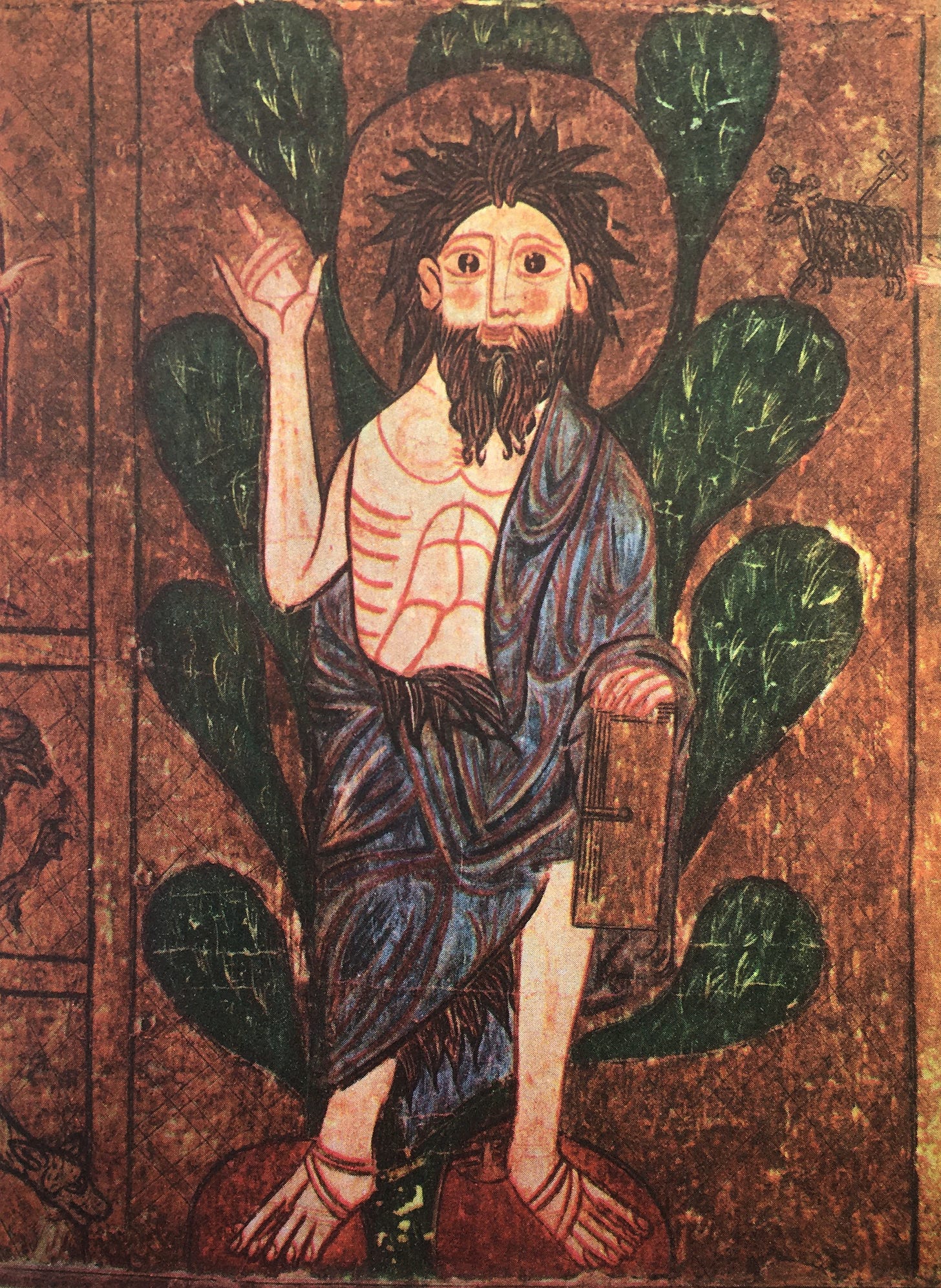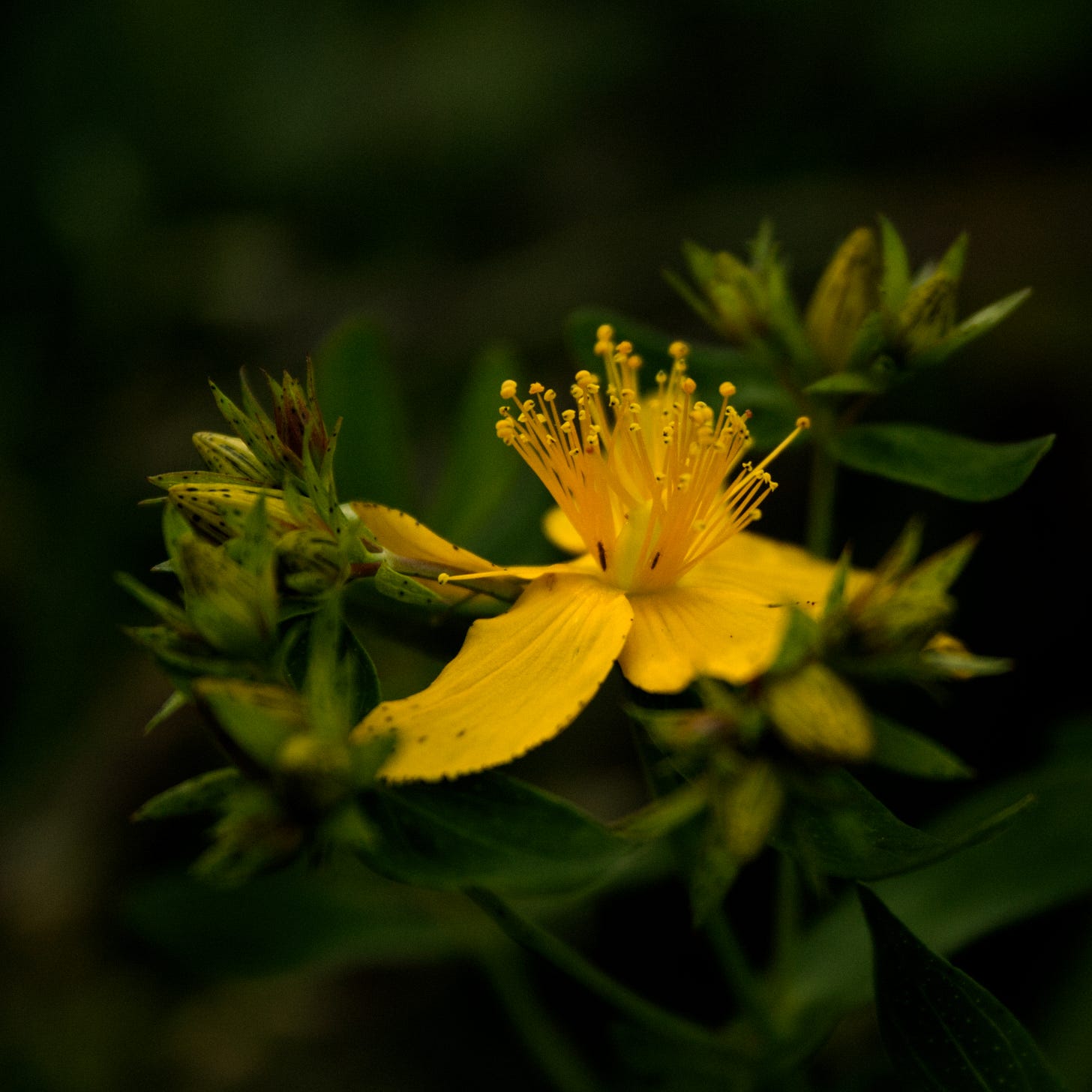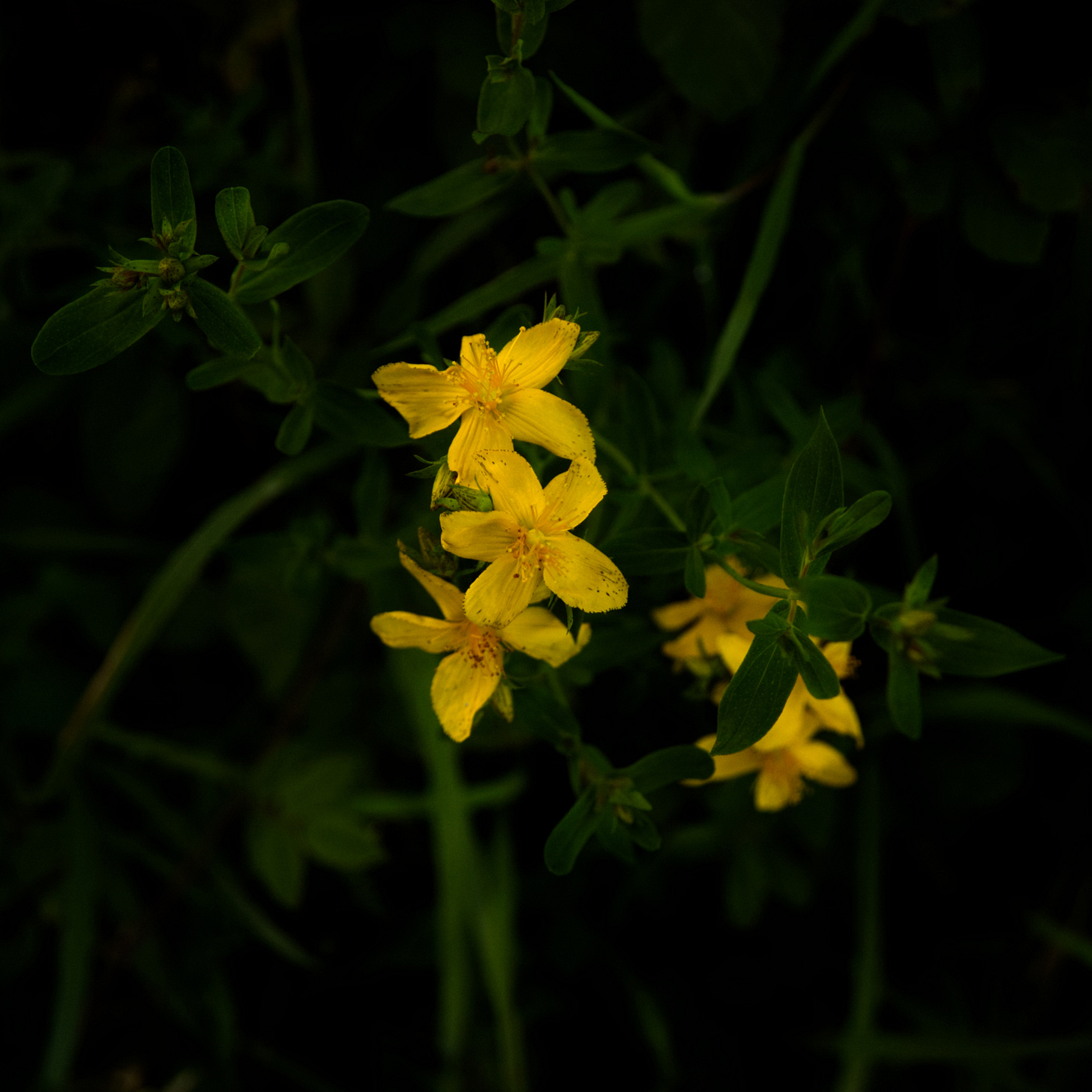Llysiau Ioan: dispel the midsummer ghosts
Wild Welsh Plants: St John's Wort / Eurinllys Trydwll / Hypericum perforatum
Welsh common names: Eurinllys Trydwll, Candoll, Llysiau Ioan, Tarfwgan, Ysgol Mair, Ysgol Grist
English common names: St John’s Wort, Perforate St John’s Wort, Klamath Weed
Scientific name: Hypericum perforatum
An ancient sun symbol, the flowers of St John’s Wort display shining golden petals with a central spray of stamens that reach towards the sky, reminiscent of rays of the sun. Blooming around mid-June it’s no surprise the plant is considered especially potent at Midsummer.
Usually falling on the 21st or 22nd of June, the pagan summer solstice was Christianised by St John’s Day, or the Feast of St John, held on the 24th of June. The story goes that according to the bible, John the Baptist was born six months earlier than his holy cousin Jesus, with the latter’s birth celebrated on the 24th of December - aka Christmas - also a few days after the Winter Solstice. Referring to Jesus, John says ‘He must increase; but I must decrease’; this sentiment reflected in the lengthening of days following Midwinter and the shortening of days following Midsummer.

Perforate St John’s Wort has quite small oval leaves dotted with oil glands that glow when held up to the light, (hence the name perforate or perforated.) This is described in the Welsh name Candoll, literally meaning ‘shining hole’, or thereabouts.
Additional Welsh names include Eurinllys Trydwll, translating to ‘perforated gold-plant’, Llysiau Ioan: John’s Plant, Ysgol Grist and Ysgol Mair, meaning Christ’s Ladder and Mary’s Ladder, likely referring to the ladder-like structure of the tall stalks with opposite leaves, imbued with Christian symbolism of ladders leading to heaven. Tarfwgan intriguingly translates to ‘ghost-scatterer’, seemingly illustrating old beliefs in the plant’s powers to dispel evil spirits on the Eve of St John, the second of the Y Tair Ysbrydnos, the Three Sprit Nights in Welsh folklore.
Folklorist Trevor M. Owen describes how:
‘Divination was popular at St. John’s Eve probably because it was formerly believed that spirits went abroad, this eve being the second of y tair ysbrydnos [the three spirit-nights]. It was the custom in many parts of the country to place over the doors of houses sprigs of St. John’s-wort or, if this were not available, the common mug-wort; the intention was to purify the house from evil spirits. St, John’s-wort gathered at noon on St. John’s Day was thought to be good for several complaints and if dug at midnight on the Eve of St. John the roots were good for driving the devil and witches away. The plant could also be used to forecast the length of life; it was, in fact, at midsummer, a charm and a means of divination, partly owing to its association with St. John, although the use of the plant may well be pre-Christian.’
Welsh Folk Customs, 1959
The alternative English name Klamath Weed stems from the Klamath river that flows through Oregon and California, indicating the plant’s presence along the riverbank. Hypericum perforatum is native to Europe, parts of Asia and North Africa, and was introduced to North America centuries ago; possibly carried by European settlers as a useful medicinal plant.
An ancient treatment for healing wounds, St John’s Wort has an incredible array of medicinal uses, including lifting low moods, treating depression and SAD, soothing burns, easing PMS symptoms and heavy periods, as well as firming veins and capillaries. There are several species of Hypericum that look similar but not all have medicinal properties. Check the leaves for oil glands and in early summer try crushing a flower bud between fingers, as Perforate St John’s Wort buds (Hypericum perforatum) produce a deep red colour - once believed to be the blood of St John. As ever, always check with a medical professional before taking a new herbal supplement; St John’s Wort can interfere with several medications so make sure to do your own research and seek advice.
St John’s Wort is visited by many pollinators and insects, including several types of beetle, moth and midge, although the plant also produces seeds without fertilisation. The seeds can lie dormant in the earth for decades, waiting in darkness until the day they are jostled into growth.
Photos by Esther Williams, taken in Hook, Pembrokeshire.
Disclaimer: don’t consume or use wild plants for health purposes without speaking to a medical professional first. Be cautious if foraging and only gather plants that you are certain of. These essays are intended to pique interest rather than act as a robust edible or medicinal guide.
References:
Flowers and Fables: A Welsh Herbal by Jocelyn Lawton
Spanish Frescoes of the Romanesque Period by Juan Ainaud. Fortuna Unesco Art Books, 1962
The Handmade Apothecary by Vicky Chown and Kim Walker
Vickery’s Folk Flora by Roy Vickery
Welsh Folk Customs by Trevor M. Owen
Welsh Names of Plants by Dafydd Davies and Arthur Jones
https://powo.science.kew.org/taxon/urn:lsid:ipni.org:names:433719-1
https://www.merriam-webster.com/dictionary/Klamath%20weed
https://www.biblegateway.com/passage/?search=John%203%3A30-35&version=KJV








Fascinating write up. Interesting that it can help with SAD, yet flourishes in midsummer. Beautiful to think that it soaks up some of the sun's goodness at this time of much light, holding it over for us when days grow shorter.